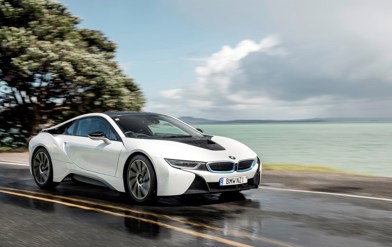It’s all about attention to detail, right? Aston Martin launched the DBX 707 earlier this year as the “world’s most powerful luxury SUV”. Luxury being the key word in that soundbite.
Seven hundred and seven horsepower (hence the name) does indeed put the DBX 707 at the top of the tree, but you have to accept that tree is in a different garden to the likes of the 710hp Dodge Durango Hellcat.

As an aside, you also have to remember Aston favours metric horsepower (ps), which results in bigger numbers than the brake horsepower used by US makers. In Kiwi calibration, the DBX 707 is 520kW, compared with 529kW for the Dodge.
It’s all just a bit unnecessary, because Aston’s main claim about the 707 is that there is “nuance behind the numbers… a sabre in a segment of sledgehammers.”
In other words, it’s supposed to be a bit more than the DBX with the volume turned up to 11. Think of it more as a details-obsessed reboot of Aston’s SUV, where everything is elevated but everything is also still supposed to be beautifully balanced. As the F1 Edition is to the Vantage coupe, the 707 is to the DBX.
View all Aston Martins on DRIVEN
Except that unlike the Vantage F1 Edition, the DBX has a lot more power than the donor car. A lot. The 4.0-litre V8 (sourced from Mercedes-AMG) has new turbochargers and a bespoke calibration that pushes it from the standard 405kW to that mighty 520kW. It’s a big enough number to make it worth a second mention and it does claim a genuine record as the highest output yet achieved from AMG’s V8 in any production model.

But an equally significant change in powertrain character comes from the nine-speed wet-clutch automatic gearbox – required for 900Nm and borrowed from the Mercedes-AMG E 63, the first time an AMG transmission has been shared outside Mercedes-AMG.
Our time with the DBX 707 was short but dramatic. It’s an astonishingly fast car by any measure, let alone one that’s a high-riding SUV weighing the best part of 2.2 tonnes. Yes, there are large BEVs that can beat the 707’s 3.3 second sprint to 100km/h (not many, mind), but not with the same sensational sound and sense of drama from a crazy-fast, cog-swapping gearbox.
Every aspect of the chassis has been finessed: steering, adaptive suspension, stability control, AWD and the electronic rear differential. All designed to provide more feedback and more adjustability to a car that already provides a delightfully analogue and authentic dynamic feel.

There’s more cornering speed too of course, although none of the above comes at huge cost to day-to-day driveability. This seems to be a knack British makers have mastered more than most (perhaps because their roads are as bad as ours), but the 707 remains a perfectly useable and comfortable SUV at urban speeds – 23-inch wheels or not. It’s noticeably firmer than the standard DBX, but not a noticeable annoyance to passengers.
The interior is not dramatically different for the 707, but being an Aston Martin it’s truly sumptuous and the trim can be as quirky as you like; our test car was black with Arden Green highlights, a strange but appropriate match for the Satin Titanium Grey (but it looks green, right?) exterior.
There is some ergonomic acknowledgement of the 707’s performance status with a revised drive mode controller on the centre console: a rotary dial flanked by suspension and stability control shortcut buttons.

All excellent, but the ancient infotainment system, based on previous-generation Mercedes-Benz architecture, is clunky by modern standards and deeply disappointing in a near-$400k car. The screen doesn’t even have touch functionality.
Our time was so short we didn’t even get to try our 707’s most novel accessory: a drawer that fits in the boot and safety carries all your beverage needs in bespoke cutouts. Like a hit man’s rifle case, but for gin and tonic. The most British car accessory ever?
And yes, the 707 does look different to the standard DBX on the outside; even better, we reckon. The changes are also mostly functional, with extra holes for cooling at the front and a rear spoiler/diffuser combo that improves aerodynamic performance.

As an aside, ignore the UK plates on our test car. We did indeed drive it in Auckland, New Zealand – but this is a factory-owned demonstrator that’s destined to head other places and then back to Blightly for other people to play with.
It’s a mighty $60k more than the standard DBX, but the 707 is mighty comprehensive reboot and at this level of the market, the money is arguably not the main thing. It’s not hard to add that much in accessories to a standard car (our last DBX test car carried a casual $48,115 in extras), so why not spend it on a car that’s so much faster and more accomplished in every possible way?
ASTON MARTIN DBX 707
ENGINE: 4.0-litre twin-turbo V8 petrol
POWER: 520kW/900Nm
GEARBOX: 9-speed automatic, AWD
0-100KM/H: 3.3 seconds
CONSUMPTION: 14.2l/100km (WLTP)
PRICE: $390,000




















